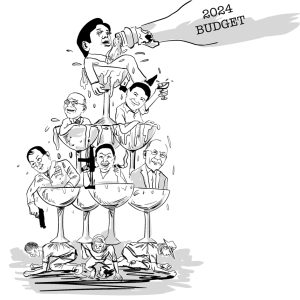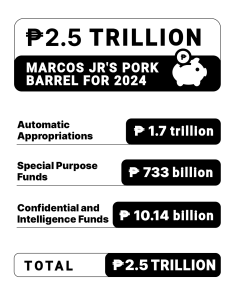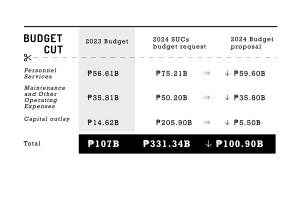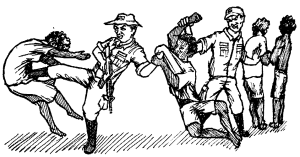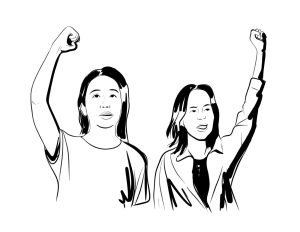Rice is expensive but palay farmers suffer losses


Filipinos could barely cope with steep prices of rice which have reached ₱60-₱70 per kilo, in apparent tandem with price increase of oil and other commodities. Marcos ordered price controls over two types of rice in September, but large businesses simply hoarded their rice supply thus leaving common rice at high prices in the market.
With his own officials in disagreement, Marcos slowly revoked the price control order. He then bragged of supposed plans to develop local production which are no different to the Masagana 99 program of his dictator father. In the 1970’s, this program plunged hundreds of thousands of families into bankruptcy and debt.
Marcos declared that import-dependence is “not beneficial” to the country. But just after a few days, his officials announced plans to reduce or remove tariffs on imported rice, supposedly to “lower prices” on the market. This coincided with reports saying that the Philippines is set to surpass China as the world’s biggest rice importer.
None of these measures explain why rice is expensive in the country, and more importantly none of these address the basic problems of rice farmers.
Farmers’ loss
It is ironic that while rice prices go up, conditions of rice farmers plummet. Most go bankrupt due to high production costs, primarily land rent and fertilizer. Production remains small-scale and individualized, unmechanized and largely rain-dependent. Their conditions are further aggravated by the deluge of rice imports which pull down farmgate prices of palay. Manipulation of prices and supply by large traders and importers are unabated.
In Laguna and Mindoro rice paddies, farmers’ expenses reach ₱50,000 to ₱100,000 for each planting cycle, depending on land size. A farmer can sell over ₱100,000 at harvest with palay farmgate prices at ₱14-₱17 per kilo. But after subtracting all production cost, he would be lucky to be left with ₱6,000, equivalent to ₱74 per day for four months of work. There are cases in Mindoro where farmers’ net profit reach only up to ₱968 for four months, or an equivalent of ₱12 per day. In relatively large parcels of land, net profits may reach ₱27,000. Nevertheless, this still only amounts to ₱337 per day based on a five-day work week.
One of the single biggest expense of rice farmers is land rent. For decades, they have languished under the “percentage” or “taxation” system of 70-30 or 60-40, in favor of the landlord. Even in cases where the percentage system favors farmers, land rent remains high considering that the landlord contributes absolutely nothing to production.
Such is the case of Mang Nilo, 59, who tills under the “taxation” system. During last harvest, he paid the landlord 15 cavans (825 kilos) out of a 90-cavan harvest. This is equivalent to ₱12,375 land rent with palay farmgate prices at ₱15 per kilo. This comprises 22% of his total production cost.
Terms are worse when production costs are shouldered by the landlord. Here, farmers only get 10% of the entire harvest. Such is the situation of Mang Teroy who tills a 1.2-hectare land. For his labor, the landlord paid him “wages” of 17 cavans out of 167 cavans of harvested rice, equivalent to ₱15,895 or ₱198.68 per day. He sold 10 cavans to a contracted agribusiness company which itself sold him fertilizer and pesticide. He tried to stretch the remaining seven cavans for his family’s consumption but was still forced to purchase rice at the market at ₱50 per kilo.
High cost of production forces farmers to borrow from banks or microlending agencies to plant. (See the table for farm input costs.) In the case of Aling Lea from Laguna, she needed to borrow ₱25,000 during the previous season to cover her planting costs. The loan incurs an ₱850 interest per month within four months. Delays will incur her a fine of ₱1,000 per day.
In Mindoro, businessmen buy rice at ₱14-15 per kilo. For 130 sacks of rice (7,150 kilos), a businessman spends ₱100,100. Additional expenses include rice processing (drying, milling, loading and transportation) usually amounting to ₱27,000. He sells freshly-milled rice at ₱50 to resellers or ₱232,000 per harvest cycle.
He, thus, earns ₱105,105 or ₱22.62 per kilo of rice he sells on the market. At face value, actual rice price is only ₱27.38 per kilo if based solely on production cost and processing prior to market selling.


